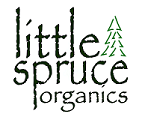Caring for your Wool
Wool is an excellent choice for baby clothing and cloth diapering because of its ability to wick moisture away from the skin and absorb up to a third of its weight in water. It also has natural antibacterial and dirt repelling properties. Because of this, it is not necessary to wash your woolens frequently.
Preparing Wool Cloth Diaper Covers for Use
Wool cloth diaper covers should be washed with a wool-safe detergent such as Eucalan prior to using them on your baby. They need to be "prepped" just as organic cotton cloth diapers do, but in a slightly different manner. We also recommend lanolizing your wool covers along with washing them before their first use to ensure that they function properly and contain leaks well.
Wool naturally contains lanolin, a natural fat secreted by wool-bearing animals that makes wool water resistant. Because some natural lanolin is lost during the spinning of the wool, all of our wool products have been washed and lanolized (re-oiled in a lanoline bath). However, it is important to lanolize again before using for the first time. You will need to lanolize your wool covers periodically, but the frequency is up to you. You can lanolize with every washing, or you can lanolize every few months if you prefer.
Washing your Wool
For best results, always wash your wool by hand. This process should be done as quickly as possible because too much soaking may cause the wool to become hard and shrink. Rinse the wool thoroughly and then place the item in a sink filled with lukewarm water. Add some wool detergent, and lightly press and then rinse.
Do not soak, rub, or wring out your wool. Following each wash, lanolize the wool in a tub containing lanolin (some people skip this step if using a wool wash that contains lanolin, but you can decide this based on how well your wool is repelling water). Reshape and lay flat to dry.
You will need the following:
- Lanolin (we recommend any type of pure lanolin- many women use the same pure lanolin they used on their breasts during the early days of breastfeeding)
- Very hot water, either in the sink, heated up in a bowl in the microwave, or poured into a glass jar
- Wool wash or any type of mild baby wash
- A sink or basin for washing & soaking + lukewarm water
- One or two clean towels
- Some sort of flat drying rack or surface that allows for air circulation
Follow these steps:
- Heat up the water until it is very hot but not boiling. You can do this in the microwave, over the stove, or directly out of your tap if your water comes out hot enough. The water must be hot enough to melt the lanolin.
- Put a small amount (1 tsp- 1 tbsp) of pure lanolin + a small amount of wool wash or mild baby wash (about 1 tsp) into the hot water and stir or shake it until the lanolin is completely melted. Make sure the lanolin is melted and that there are not bits still floating around.
- Add your hot water/lanolin/soap mixture to a sink or basin of lukewarm water (or, if you are using the tap water method, simply turn on your tap again and add some lukewarm water to the mixture).
- Turn your wool soaker inside out and gently press it under the water. Very gently, swish it around a bit under the water so that the lanolin will be evenly distributed over the wool.
- Let the wool soak for around fifteen minutes. Drain the water. Rinse if necessary. Rinsing at this point is optional if using wool wash; read the label and see if it requires rinsing.
- Lift the wool from the sink and gently press the water out . Do not wring the wool out. Supporting the wool, gently lay it down on a clean towel. Reshape, and then slowly roll it between two layers of a clean dry towel. Repeat several times until excess water is removed.
- Lay flat to dry on a supportive, flat drying rack. The wool can take between 24 and 36 hours to dry, depending on how thick the wool is and how humid the climate is. Turn the wool inside out at least once during the drying process to speed it up a bit.
